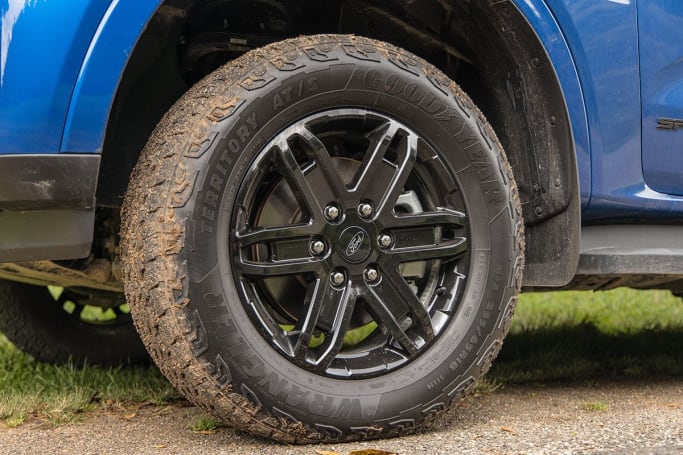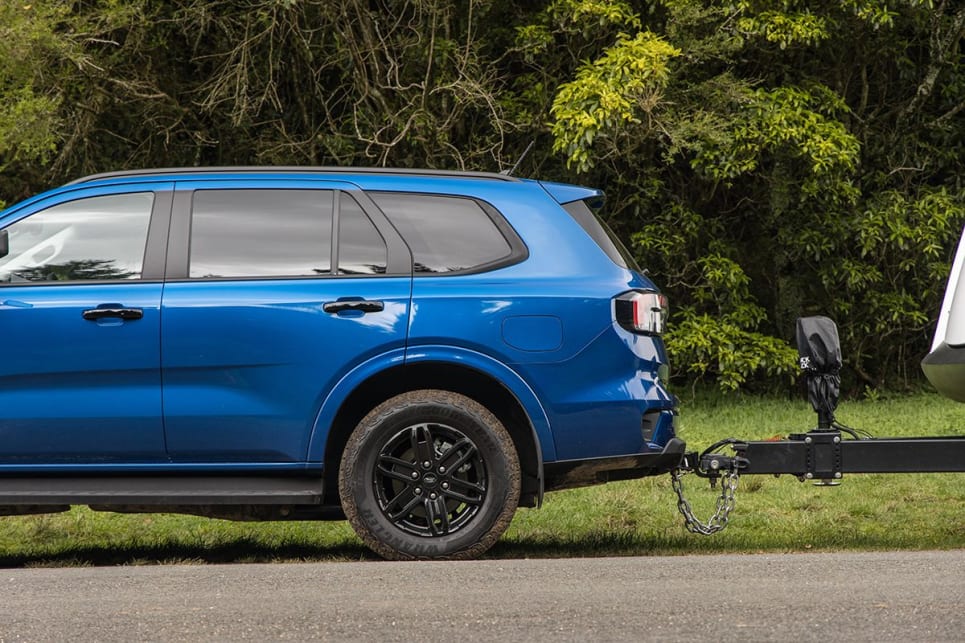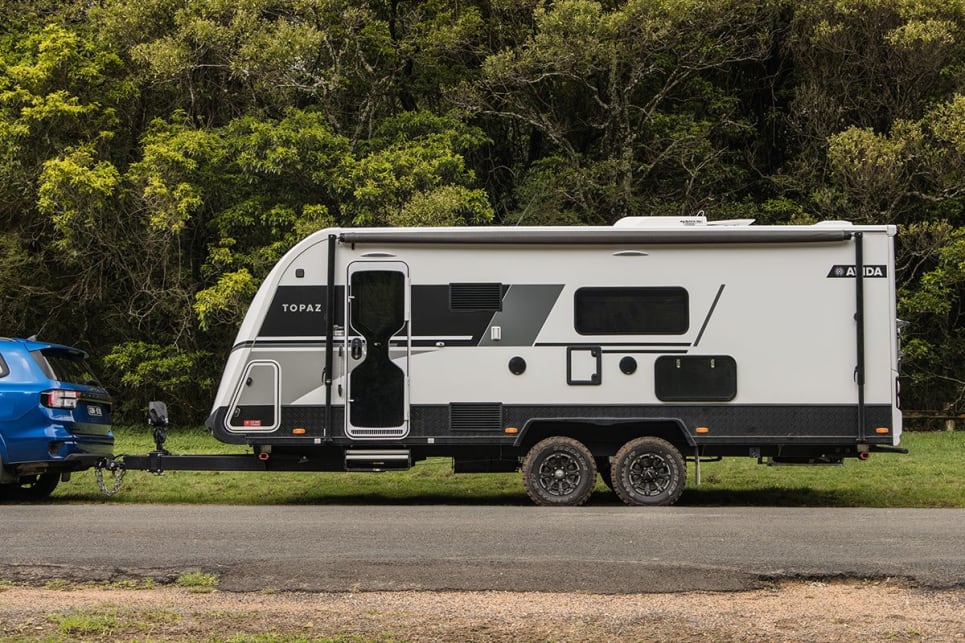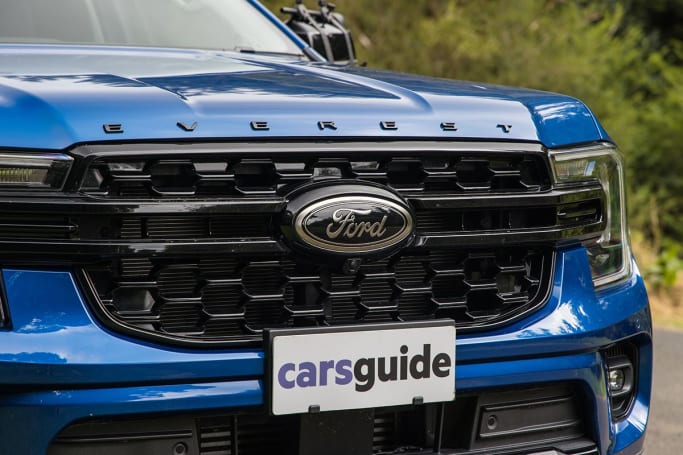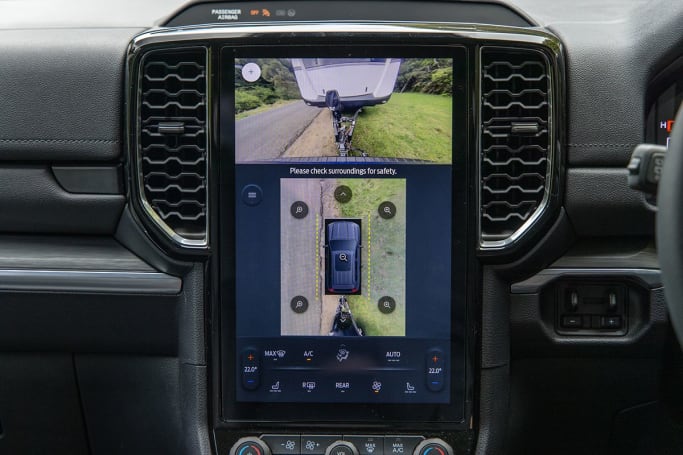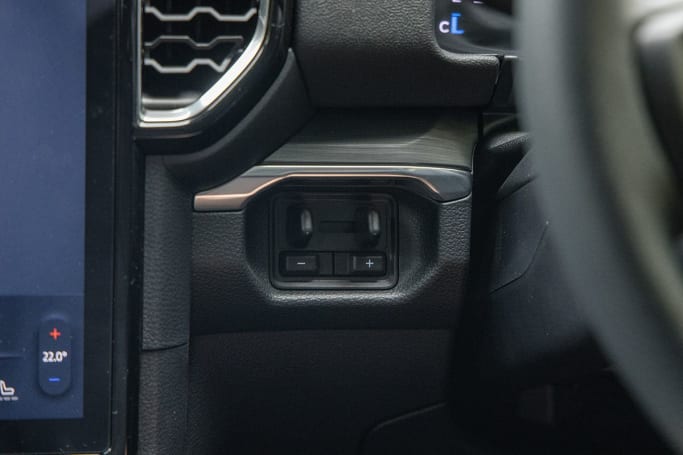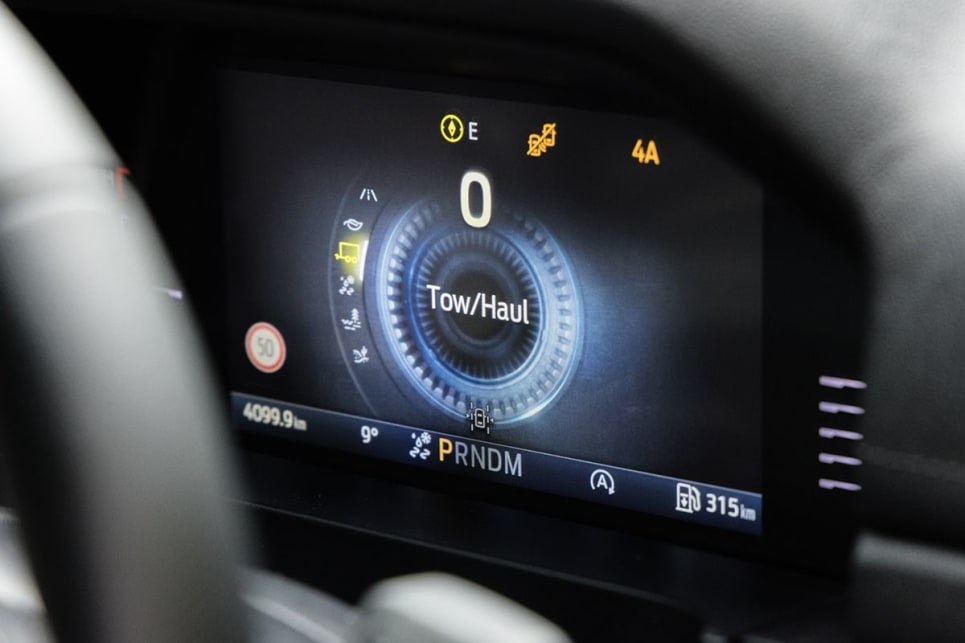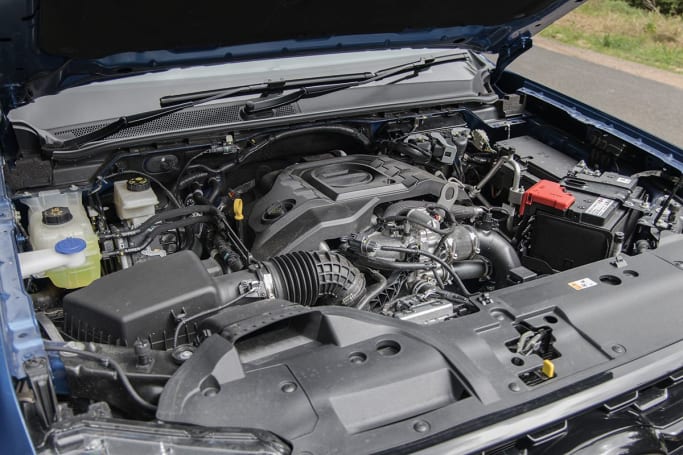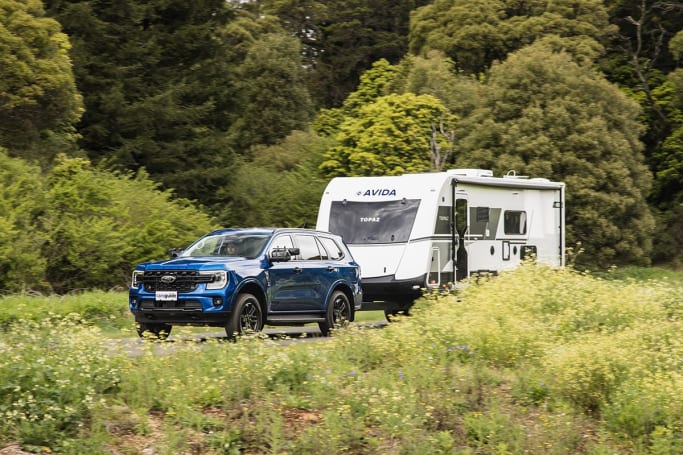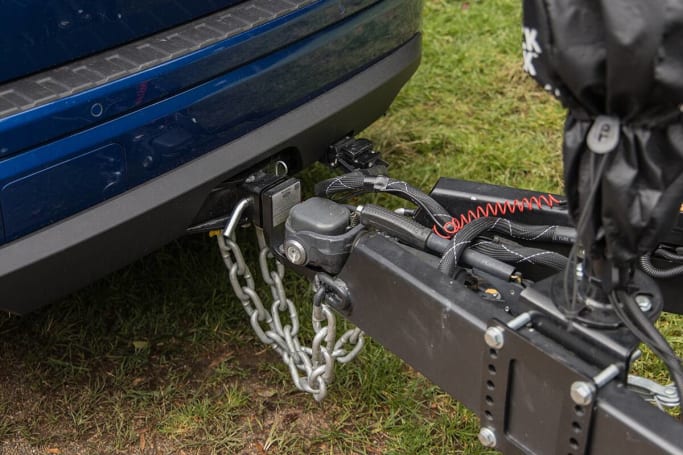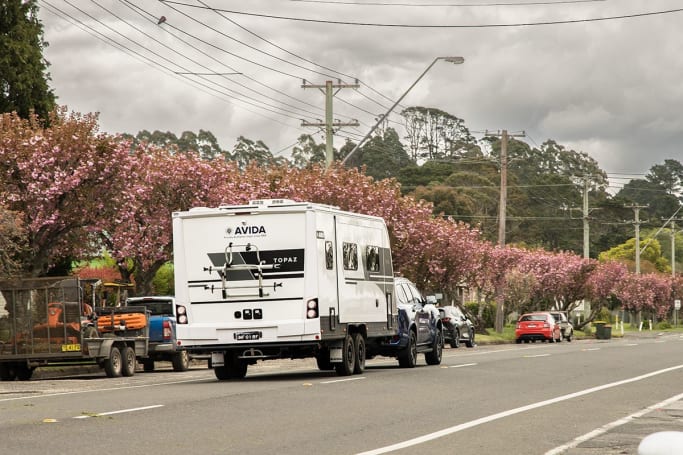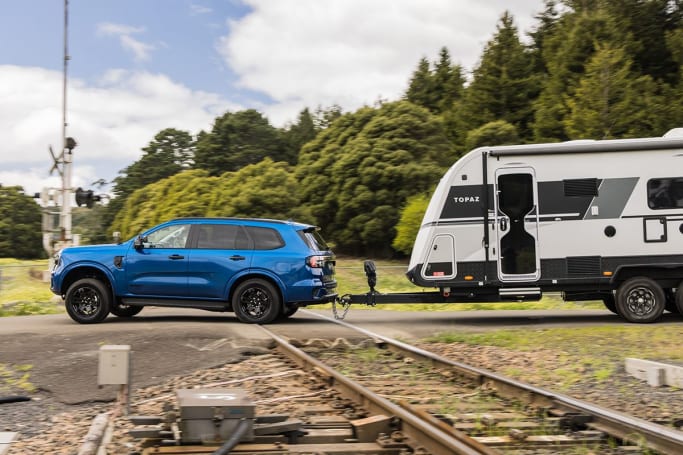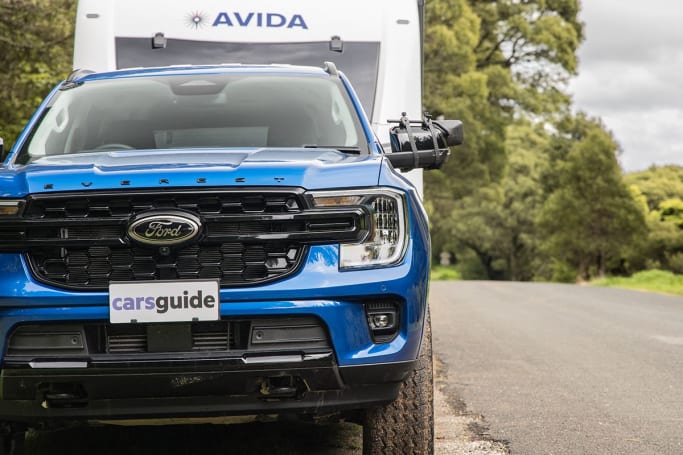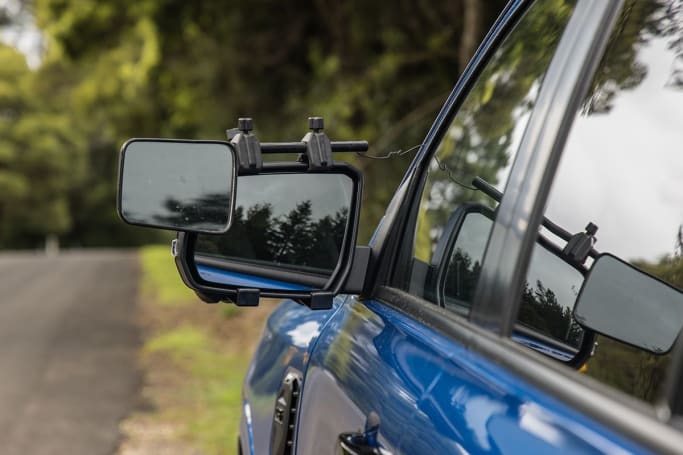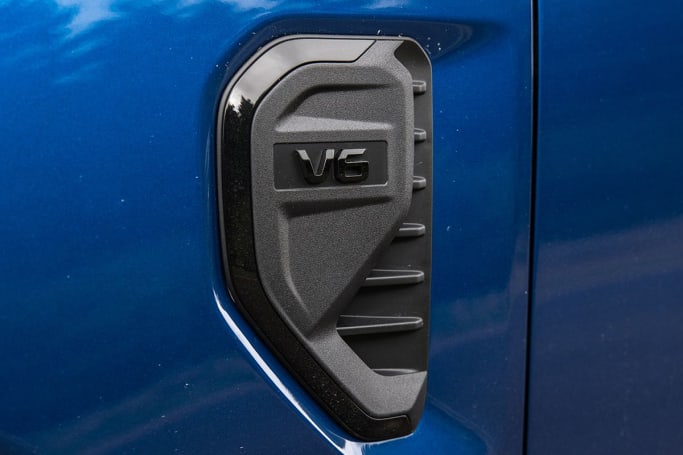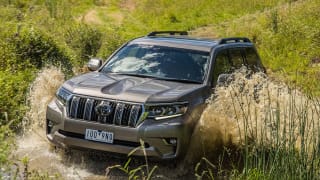The version of the Everest we selected for this test is the one I called my pick of the range at the launch event - the second-from-top, V6-powered Sport model.
With a list price of $69,090 (MSRP) it's hardly the most affordable ute-based SUV out there, but it's the cheapest way into a V6-powered seven-seat 4x4 on the market. If a V6 isn't the be-all and end-all for you, consider the lower spec models, as they offer pretty compelling value.
Our test car had the optional Touring Pack, which costs $1950 and adds a few must-have items for towing - a tow bar, integrated electronic brake controller, wiring kit, trailer setup screen for the multimedia unit, Ford's Zone Lighting system with exterior LEDs that can illuminate the car's surrounds, a 360-degree camera system, and blind-spot monitoring for the towed load.
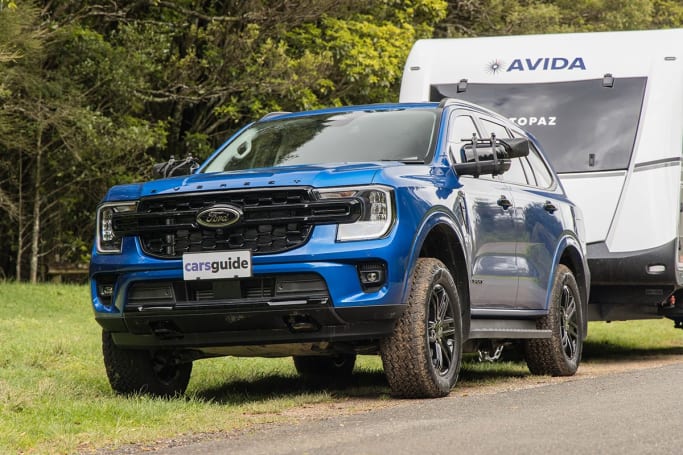
That kit really should be standard on a 4x4 that costs this much, if you ask me. However, the standard equipment list is pretty generous otherwise, including sports front seats with leather accented trim throughout, heated and cooled front seats, a 10-speaker audio system, keyless entry and push-button start, LED headlights and daytime running lights, an 8.4-inch digital instrument cluster and 12.0-inch touchscreen media system with Apple CarPlay, Android Auto and sat nav.
Our loan vehicle also had the no-cost optional switch from the standard 20-inch rims with road tyres to a set of black 18-inch rims with all-terrain rubber - though they were not as aggressive as the AT rubber fitted to our test caravan, the Avida Topaz CV7054SL all-terrain van.
Find more on the safety specs and inclusions below.
